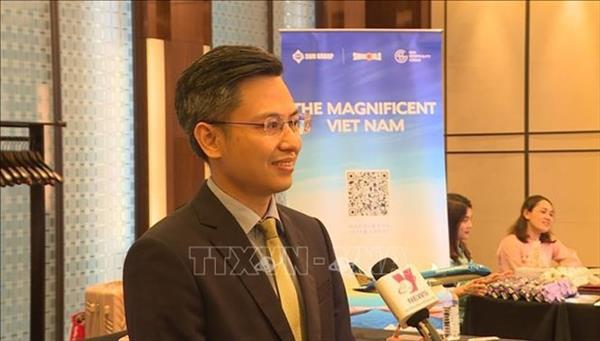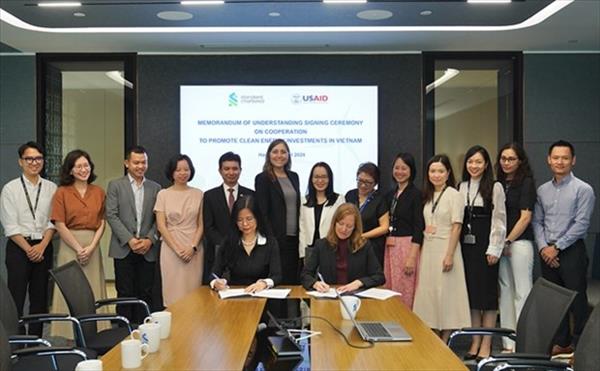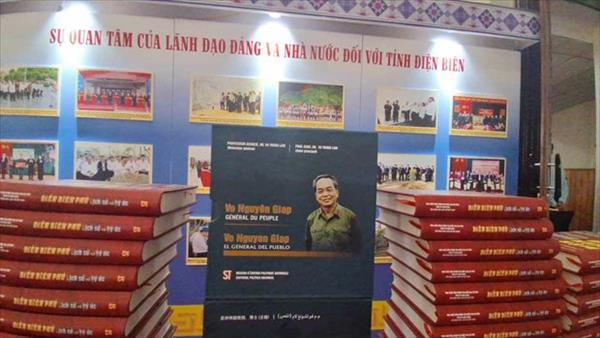Hanoi, February 22 (VNA) - Though experts forecast a rise in lending interest rates in 2016, a central bank official believes it is feasible to keep the rates stable and reducing it slightly this year.
Though admitting that keeping the rate stable this year was a challenge for the central bank, Director of the State Bank of Vietnam's Monetary Policy Department, Bui Quoc Dung, said that the central bank could take more measures to bring down medium- and long-term rates this year.
Dung told online newspaper VnExpress that numerous factors could put pressure on interest rates this year.
Firstly, inflation, which was forecast to be around 4 percent to 5 percent this year, much higher than last year's rate of 0.6 percent, could put pressure on deposit interest rates, Dung said.
Besides, he said, credit demand was also estimated to rise this year as the Government's GDP growth target this year was 6.7 percent, higher than last year's 6.68 percent rate and the 5.88 percent average rate in the 2011 to 2015 period.
In addition, there was severe pressure on the rising medium- and long-term interest rate this year as the interest rate of G-bonds with maturity of five years in 2015 surged sharply from 5.4 percent to nearly 7 percent. Demand for G-bonds this year was also expected to be higher than last year, according to Dung.
To be able to cut the interest rate slightly this year as targeted, Dung said, besides continuously implementing consistent and comprehensive measures the same as in 2015, the central bank would also apply more measures in a move to enhance the possibility to be able to adjust down the interest rate in accordance with the monetary policy target. However, Dung did not reveal details of the proposed measures.
Experts have so far still been concerned that interest rates would possibly increase again this year, after remaining at the low levels of 2006 for the past few years. Thanks to the restructuring of the banking system, the lending rate has been cut in half, from 20 percent per year in late 2011 to between 9 percent and 11 percent this year for ordinary loans, and 6.5 percent for prioritised loans, which is equal to the 2006 rate.
In a report released this week, the Military Bank Securities (MBS) forecast that high credit demand could cause a slight rise in interest rate next months.
According to the MBS report, the inter-bank rate in the second half of January and in the first half of February 2016 increased significantly due to higher liquidity in the banking system during the Lunar New Year.
Though the central bank pumped a large amount of money into the inter-bank market in the period, the liquidity of the banking system showed restricted signs with the inter-bank overnight rate remaining high at 5.2 percent per year, up from 5.1 percent of the past two weeks, the MBS reported.
Besides, according to statistics from the central bank, 14 credit institutions adjusted their deposit interest rates upwards by roughly 0.1 percent to 0.5 percent per year in many terms in the last month of last year, which could cause a rise in lending interest rate next time, the MBS said.
The HCM Securities Corporation (HSC) recently also said that to guarantee the expansion of credit, mobilisation needs to grow parallel, while banks have to allocate resources to purchase G-bonds and handle bad debts, thus putting pressure on interest rates.
Banks also need to increase deposit rates to attract depositors. However, if banks do not balance input and output costs, they would have to raise lending rates, HSC said, and added that low interest rates could be risky for the banking system.
Banking expert Nguyen Tri Hieu said that he saw no signs to indicate a reduction in rates this year, forecasting that the lending rate could rise at least 1 percent this year.
Hieu said that banks were trying to mobilise capital, even as liquidity at some banks was poor, caused by their boosting lending too quickly.
Another reason for higher interest rates is that Vietnam expected its foreign exchange rate to remain stable, so the gap between interest rates of the dong and the US dollar must be high enough to attract dong deposits, according to Hieu.
He also noted that higher economic growth this year could push up the demands for capital, causing interest rates to increase, too.
Though admitting that keeping the rate stable this year was a challenge for the central bank, Director of the State Bank of Vietnam's Monetary Policy Department, Bui Quoc Dung, said that the central bank could take more measures to bring down medium- and long-term rates this year.
Dung told online newspaper VnExpress that numerous factors could put pressure on interest rates this year.
Firstly, inflation, which was forecast to be around 4 percent to 5 percent this year, much higher than last year's rate of 0.6 percent, could put pressure on deposit interest rates, Dung said.
Besides, he said, credit demand was also estimated to rise this year as the Government's GDP growth target this year was 6.7 percent, higher than last year's 6.68 percent rate and the 5.88 percent average rate in the 2011 to 2015 period.
In addition, there was severe pressure on the rising medium- and long-term interest rate this year as the interest rate of G-bonds with maturity of five years in 2015 surged sharply from 5.4 percent to nearly 7 percent. Demand for G-bonds this year was also expected to be higher than last year, according to Dung.
To be able to cut the interest rate slightly this year as targeted, Dung said, besides continuously implementing consistent and comprehensive measures the same as in 2015, the central bank would also apply more measures in a move to enhance the possibility to be able to adjust down the interest rate in accordance with the monetary policy target. However, Dung did not reveal details of the proposed measures.
Experts have so far still been concerned that interest rates would possibly increase again this year, after remaining at the low levels of 2006 for the past few years. Thanks to the restructuring of the banking system, the lending rate has been cut in half, from 20 percent per year in late 2011 to between 9 percent and 11 percent this year for ordinary loans, and 6.5 percent for prioritised loans, which is equal to the 2006 rate.
In a report released this week, the Military Bank Securities (MBS) forecast that high credit demand could cause a slight rise in interest rate next months.
According to the MBS report, the inter-bank rate in the second half of January and in the first half of February 2016 increased significantly due to higher liquidity in the banking system during the Lunar New Year.
Though the central bank pumped a large amount of money into the inter-bank market in the period, the liquidity of the banking system showed restricted signs with the inter-bank overnight rate remaining high at 5.2 percent per year, up from 5.1 percent of the past two weeks, the MBS reported.
Besides, according to statistics from the central bank, 14 credit institutions adjusted their deposit interest rates upwards by roughly 0.1 percent to 0.5 percent per year in many terms in the last month of last year, which could cause a rise in lending interest rate next time, the MBS said.
The HCM Securities Corporation (HSC) recently also said that to guarantee the expansion of credit, mobilisation needs to grow parallel, while banks have to allocate resources to purchase G-bonds and handle bad debts, thus putting pressure on interest rates.
Banks also need to increase deposit rates to attract depositors. However, if banks do not balance input and output costs, they would have to raise lending rates, HSC said, and added that low interest rates could be risky for the banking system.
Banking expert Nguyen Tri Hieu said that he saw no signs to indicate a reduction in rates this year, forecasting that the lending rate could rise at least 1 percent this year.
Hieu said that banks were trying to mobilise capital, even as liquidity at some banks was poor, caused by their boosting lending too quickly.
Another reason for higher interest rates is that Vietnam expected its foreign exchange rate to remain stable, so the gap between interest rates of the dong and the US dollar must be high enough to attract dong deposits, according to Hieu.
He also noted that higher economic growth this year could push up the demands for capital, causing interest rates to increase, too.
VNA/VNP

















